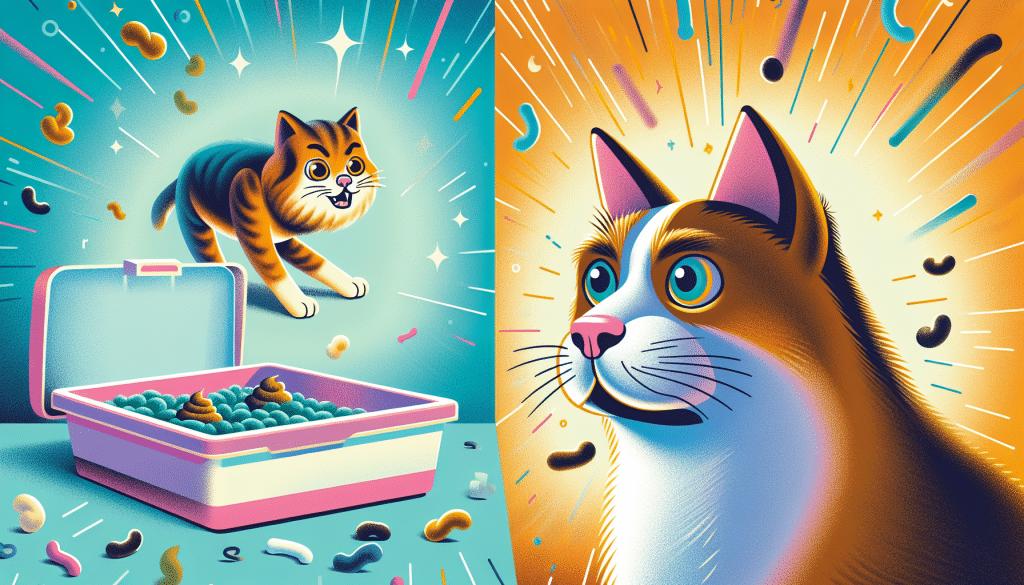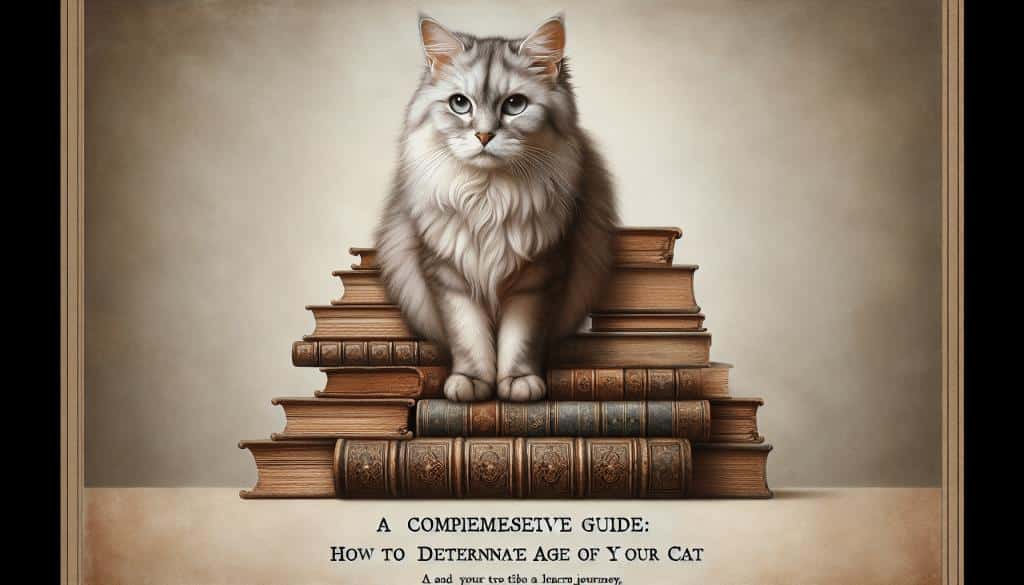If you have both a dog and a cat in your household, you may have encountered the unpleasant situation of your beloved canine companion munching down on cat poop. Not only is this behavior unappetizing, but it can also be hazardous to your dog’s health. To help you navigate this rather peculiar predicament, we have put together 10 practical tips to prevent your dog from indulging in this less-than-desirable dietary preference. By implementing these tips, you can ensure a safer and cleaner environment for both your furry friends.

Understanding Why Dogs Eat Cat Poop
You may wonder why some dogs find cat poop irresistible. Well, there are a few reasons behind this odd behavior. One possible explanation is that dogs are naturally attracted to the scent of cat feces. Cats have a high-protein diet, and when they poop, it releases a strong odor that dogs find appealing. Additionally, some dogs might see cat poop as a source of food, especially if they’re not getting the necessary nutrients from their own diet. It’s important to understand these reasons in order to find effective solutions to prevent your dog from indulging in this habit.
The Potential Health Risks Associated with Eating Cat Poop
While it might seem harmless, eating cat poop can actually pose health risks to your furry friend. Cat feces may contain parasites, bacteria, and viruses that can cause various illnesses in dogs. For example, the Toxoplasma gondii parasite found in cat feces can lead to toxoplasmosis, a disease that can affect your dog’s immune system, eyes, and other organs. Ingesting harmful substances from the litter box can also cause gastrointestinal issues, such as vomiting and diarrhea. Therefore, it’s crucial to take preventive measures to protect your dog’s health and well-being.
Understanding the Dog’s Breed and Their Inclination Towards Coprophagia
Some dog breeds may have a higher inclination towards coprophagia, which is the scientific term for eating feces. This behavior is more commonly seen in certain breeds, such as Beagles and Labradors. It’s believed that their genetic predisposition or instinctual behaviors contribute to their attraction to cat poop. However, it’s important to note that not all dogs of these breeds will exhibit this behavior. Each dog is unique, and factors such as individual temperament and training can also influence their tendency towards coprophagia. Understanding your dog’s breed and its potential inclination can help you address the issue more effectively.
Proper Bloating and Health Control
Keeping up with regular vet check-ups is vital for your dog’s overall health, including their digestive system. Your veterinarian can assess your dog’s diet, identify any nutritional deficiencies, and provide dietary recommendations to optimize their health. Ensuring that your dog is on an optimal diet, rich in essential nutrients and high-quality ingredients, can greatly reduce their inclination towards eating cat poop. Additionally, monitoring your dog’s bloating and digestive health is crucial. If you notice any irregularities or changes in their stool, it’s important to consult your vet for further guidance.

Making Cat’s Stool Less Appealing to Dogs
One effective approach to prevent dogs from eating cat poop is by making the cat’s stool unappealing to them. Adding certain foods to the cat’s diet can alter the smell and taste of the feces, deterring your dog from indulging in this behavior. For example, you can feed your cat pineapple, which naturally makes their stool less appealing to dogs. However, it’s important to consult with your veterinarian before making any changes to your cat’s diet to ensure that it remains balanced and safe for their overall health.
Safe Additives for Cat Food
If altering the cat’s diet is not a viable option, there are safe additives available that can be mixed with cat food to make the stool unappetizing for dogs. These additives typically contain natural ingredients that are harmless to cats but add an unpleasant taste or smell to their feces. For instance, products with yucca extract or digestive enzymes have been known to deter dogs from consuming the cat’s litter box treasures. It’s important to choose safe and reputable additives that have been approved by veterinarians.
Understanding Food Items That Might Cause Harm to Cats
While it’s important to make the cat’s stool unappealing to dogs, it’s equally crucial to ensure that the additives or changes in diet do not harm the cat. Certain food items can be toxic to cats, so it’s essential to familiarize yourself with foods that are safe for feline consumption. For example, onions, garlic, and chocolate are highly toxic to cats and should never be given to them. Always consult with your vet to confirm that any changes you make to the cat’s diet are safe and appropriate for their specific needs.
Training Your Dog to Avoid the Cat’s Litter Box
One effective way to prevent your dog from eating cat poop is through training. Positive reinforcement training is particularly effective in shaping your dog’s behavior. Whenever your dog demonstrates desirable behaviors, such as ignoring the litter box or staying away from it, reward them with treats or praise. On the other hand, distraction techniques and commands can also be useful. For instance, teaching your dog a command such as “leave it” or redirecting their attention to a toy when they approach the litter box can help deter them from indulging in cat poop. Consistency in training is key to ensure that they understand and follow the desired behavior consistently.

Creating Physical Barriers Around the Litter Box
Another preventive measure to consider is creating physical barriers around the litter box. Baby gates or other types of barriers can be used to restrict your dog’s access to the litter box. Choose a barrier that is suitable for your dog’s size and breed, ensuring that it is sturdy enough to prevent them from getting to the litter box. Additionally, locating the litter box in an area that is inaccessible to the dog, such as a separate room or elevated platform, can be effective in keeping them away from the cat’s stool.
Investing in Dog-Proof Litter Boxes
If creating physical barriers alone is not sufficient, you may want to invest in a dog-proof litter box. These specially designed litter boxes have features that make it challenging for dogs to access the cat’s poop. Some models have covered tops or side entry points, preventing dogs from getting to the litter. While dog-proof litter boxes may require an initial investment, they can prove to be a cost-effective solution in the long run by saving you from the potential health risks and inconvenience associated with your dog eating cat poop.
Conditioning and Behavioral Alteration Techniques
For more persistent cases of coprophagia, conditioning and behavioral alteration techniques may be necessary. These techniques involve teaching your dog to associate the litter box with something negative or unpleasant. For example, placing a taste deterrent or unpleasant odor near the litter box can discourage your dog from approaching it. However, it’s important to ensure that the deterrent is safe for both the dog and the cat. In severe cases, seeking the assistance of a professional dog trainer can be beneficial, as they have specialized knowledge and experience in modifying dog behavior.
Keeping Dogs Occupied to Evade Cat Poop
One effective way to prevent dogs from seeking out the cat’s litter box is by keeping them occupied and mentally stimulated. Provide your dog with plenty of toys and puzzle feeders that will challenge their mind and keep them engaged. Interactive toys that dispense treats can be particularly helpful, as they redirect their focus and energy towards getting the rewards from the toys instead of searching for cat poop. Additionally, regular exercise and walks are essential for both physical and mental stimulation, which can contribute to reducing your dog’s interest in the litter box.
Nutritional Supplements to Eliminate Interest in Cat Poop
In some cases, adding nutritional supplements to your dog’s diet can help eliminate their interest in cat poop. Certain supplements contain ingredients that can alter the dog’s taste or reduce their cravings for feces. However, it’s crucial to consult with your veterinarian before incorporating any supplements into your dog’s diet. They can guide you on the appropriate dosage and ensure that the supplements are safe for your dog’s overall health. It’s also important to be aware of potential side effects and administer the supplements in a safe and controlled manner.
Vigilance and Regular Monitoring
Preventing coprophagia requires vigilance and regular monitoring on the part of the dog owner. Keep a close eye on your dog’s behavior around the litter box and promptly intervene if you notice any signs of interest or attempted access. Dogs may exhibit certain behaviors, such as sniffing or circling around the litter box, that indicate their intention to consume the cat’s poop. By monitoring their behavior and intervening when necessary, you can effectively prevent the habit from becoming ingrained. It’s important to remain proactive and consistent in your efforts to discourage this behavior.
Techniques for Monitoring Dog’s Behavior Around the Litter Box
To effectively monitor your dog’s behavior around the litter box, create a routine of observing them during their bathroom breaks. Make sure to supervise them closely and be ready to intervene if needed. If your dog shows any interest in the litter box, redirect their attention to a toy or command them to move away. By consistently monitoring their behavior and intervening when necessary, you can reinforce the message that approaching the litter box is undesirable. Over time, this vigilance will help break the habit and discourage your dog from eating cat poop.
Understanding Dog Body Language Related to Guilty Behaviors
Dogs exhibit certain body language cues that can indicate guilt or awareness of engaging in undesirable behaviors. When your dog approaches the litter box or shows interest in it, they may display signs such as lowered ears, a tucked tail, or avoiding eye contact. These behaviors often indicate a sense of guilt or recognition that their actions are disapproved of. By understanding and recognizing these body language cues, you can promptly address the situation and reinforce the behavior you desire. It’s important to approach the situation with patience and consistency to help your dog overcome their inclination to eat cat poop.



